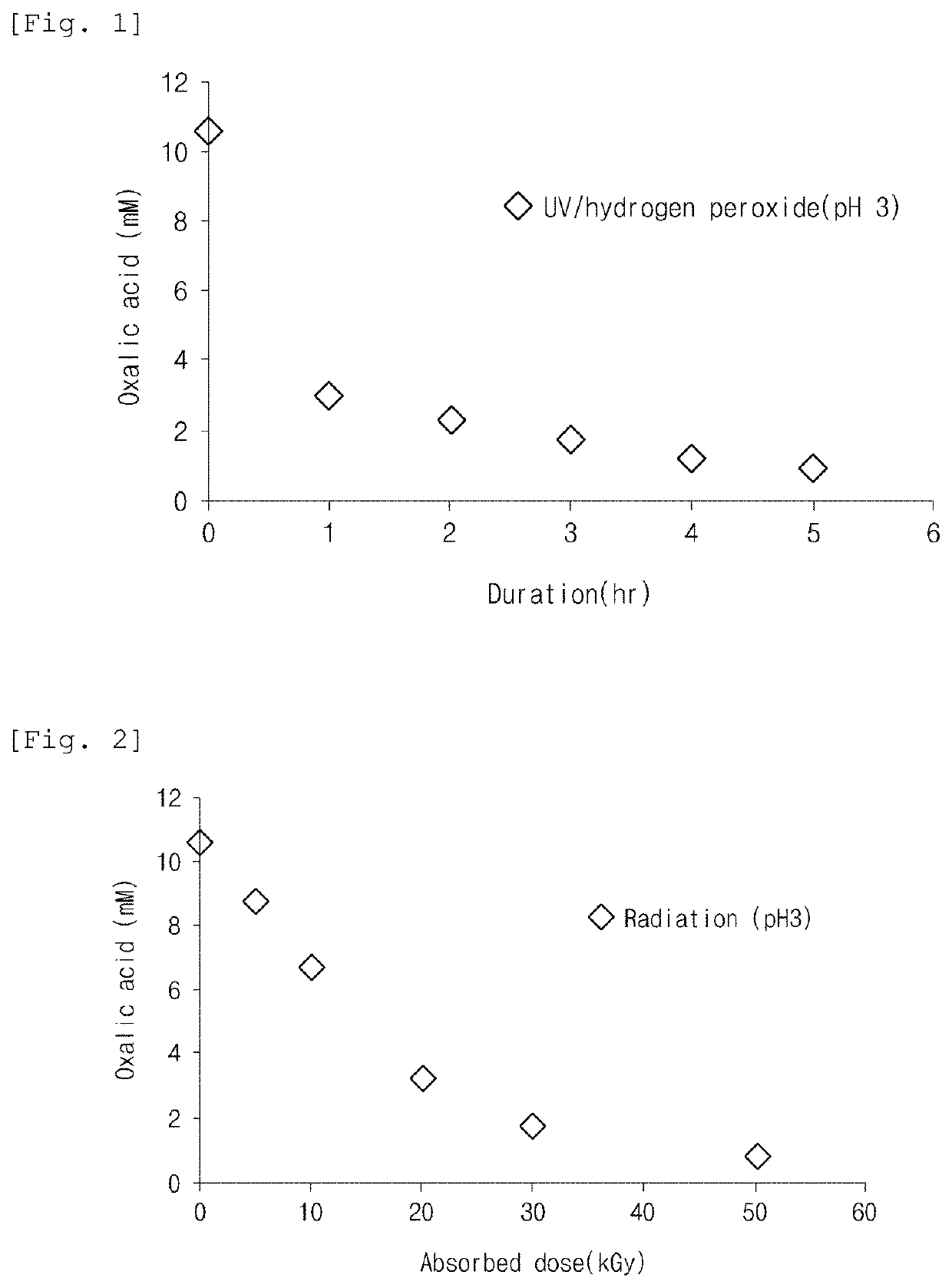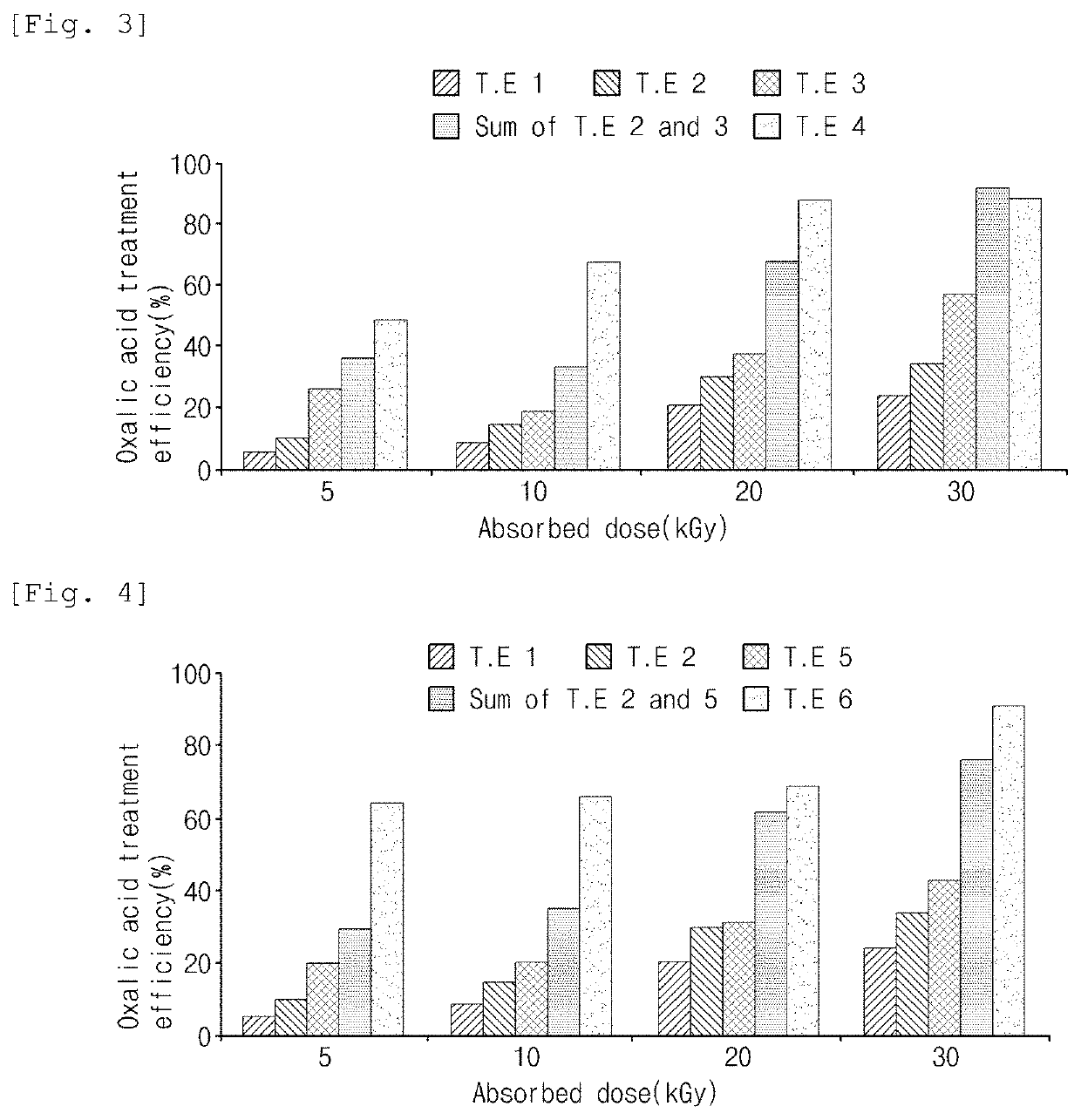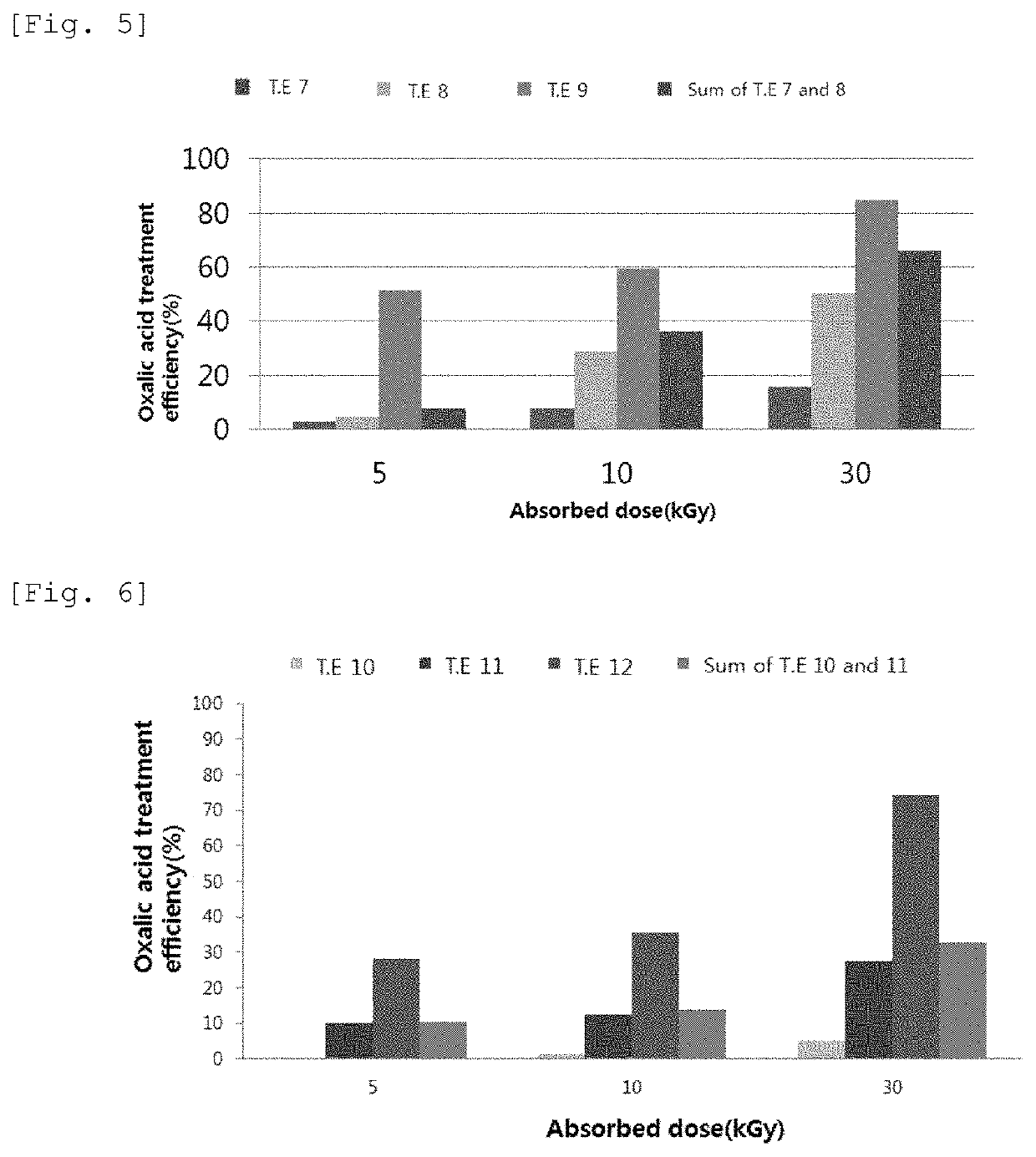Method for Treating Radioactive Liquid Waste
- Summary
- Abstract
- Description
- Claims
- Application Information
AI Technical Summary
Benefits of technology
Problems solved by technology
Method used
Image
Examples
experimental example 1
Verification of Synergistic Effect of Adding Metal Ion and Oxidizing Agent Together During Radiation Treatment
[0065]In order to treat an organic acid and oxalic acid used as a complexing agent in a decontamination process at a nuclear power plant, an electron beam was used, and a radiation irradiation dose was 5, 10, 20, and 30 kGy. The concentration of the oxalic acid used in the present experiment was 2 mM, and the pH thereof was adjusted to 9.
[0066]A batch treated only with radiation (Treatment Example 1), a batch added with 2 mM of Fe(II) (Treatment Example 2), a batch added with 5 mM of S2O82− (Treatment Example 3), and a batch added with 2 mM of Fe(II) and 5 mM of S2O82− (Treatment Example 4) were used for the experiment. The treatment efficiency (%) for oxalic acid was calculated by subtracting the content of remaining oxalic acid after the radiation irradiation from the content of oxalic acid before the radiation irradiation, and is shown in FIG. 3. In addition, in order to ...
experimental example 2
Verification of Synergistic Effect of Adding Metal Ion and Oxygen Together During Radiation Treatment
[0069]In order to treat an organic acid and oxalic acid used as a complexing agent in a decontamination process at a nuclear power plant, an electron beam was used, and a radiation irradiation dose was 5, 10, 20, and 30 kGy. The concentration of the oxalic acid used in the present experiment was 2 mM, and the pH thereof was adjusted to 9.
[0070]A batch treated only with radiation (Treatment Example 1), a batch added with 2 mM of Fe(II) (Treatment Example 2), a batch added with 0.0442 mM of oxygen (Treatment Example 5), and a batch added with 2 mM of Fe(II) and 0.0442 mM oxygen (Treatment Example 6) were used for the experiment. The treatment efficiency (%) for oxalic acid was calculated by subtracting the content of remaining oxalic acid after the radiation irradiation from the content of oxalic acid before the radiation irradiation, and is shown in FIG. 4. In addition, in order to ve...
experimental example 3
Verification of Effect of Injecting Air, Metal Ion, and Semiconductor During Radiation Treatment
[0073]In order to treat an organic acid and oxalic acid used as a complexing agent in a decontamination process at a nuclear power plant, a gamma ray was used, and a radiation irradiation dose was 5, 10, and 30 kGy. The concentration of the oxalic acid used in the present experiment was 2 mM, and the pH thereof was 2.5. The air was injected for 20 minutes by substitution and dissolution.
[0074]1 mM of a copper ion and 1 mM of titanium dioxide were respectively added as a metal ion and as a semiconductor to perform the experiment. Specifically, a batch in which the copper ion was added to radioactive liquid waste injected with air (Treatment Example 7), a batch in which titanium dioxide was added to radioactive liquid waste injected with air (Treatment Example 8), and a batch in which the copper ion and titanium dioxide were added to radioactive liquid waste injected with air (Treatment Exa...
PUM
 Login to View More
Login to View More Abstract
Description
Claims
Application Information
 Login to View More
Login to View More - R&D
- Intellectual Property
- Life Sciences
- Materials
- Tech Scout
- Unparalleled Data Quality
- Higher Quality Content
- 60% Fewer Hallucinations
Browse by: Latest US Patents, China's latest patents, Technical Efficacy Thesaurus, Application Domain, Technology Topic, Popular Technical Reports.
© 2025 PatSnap. All rights reserved.Legal|Privacy policy|Modern Slavery Act Transparency Statement|Sitemap|About US| Contact US: help@patsnap.com



